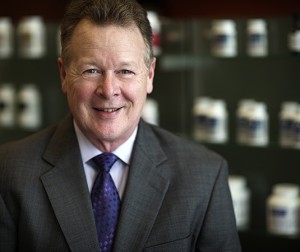Webinar Recording: Hormone Testing – Best Practices & Clinical Considerations
Presented by Jim Paoletti, BS Pharmacy, FAARFM, FIACP – Director of Education at Power2Practice
Listen to/watch the recording below and download the slides by clicking here!
Topics Covered:
- Advantages, disadvantages and considerations pertaining to the different bodily fluids that can be used to test hormone levels: Serum/Plasma, 24-Hour Urine, Saliva and Capillary Blood.
- The use of appropriate testing for topical hormone administration.
- Considerations related to topically applied progesterone and endometrium tissue effects.
Webinar Recorded: January 19, 2016
Q&A:
QUESTION: When should you test cycling patients?
ANSWER: Testing should be done when all the hormones are at a high level. For a woman who is cycling this would be from day 18 through day 21 of her cycle
QUESTION: Any comments of what is a good textbook for prescribing?
ANSWER: There has never been a book that I (Jim) could recommend for understanding and prescribing BHRT, so last year I wrote one called, “A Practitioner’s Guide to Physiologic Bioidentical Hormone Balance.” It includes chapters on dosage forms and an appendix on dosing guidelines. It can be purchased on Amazon.com.
QUESTION: Is an initial test with serum acceptable? Before being put on hormones?
ANSWER: Serum can be used for initial resting for endogenous hormones. Keep in mind though that the androgens, testosterone and DHEA are not accurate for females in most cases and there is no way to get a good assessment of adrenal function.
QUESTION: How do you feel about following FSH? (from Barbara)
ANSWER: FSH levels have been used for years in conventional hormone testing to determine estrogen need in a woman. However, FSH is NOT regulated by estrogen. FSH is controlled by inhibin, a hormone released primarily from the corpus luteum. When a woman no longer produces a dominant follicle and corpus luteum, then inhibin levels fall and FSH rises. High FSH levels indicate anovulation, not necessarily a deficiency in estrogen. Note that since the majority of progesterone also comes from the corpus luteum, then a rise in FSH should correlate with a deficiency on progesterone. In over 30 years I have yet to see a female patient with repeated high FSH levels who was not deficient in progesterone.
QUESTION: Do you have resources on references for optimal hormone ranges when measuring with blood spot, salivary and/or serum methodology?
ANSWER: I do not know of any resources with references for optimal hormone ranges. The most likely place to find good information would be ZRT Laboratory, so you may want to check with them.
About the Presenter:
Jim Paoletti, BS Pharmacy, FAARFM, FIACP, is the Director of Education at Power2Practice and a Clinical Consultant with over 30 years of experience creating and using bio-identical hormone therapies in both retail pharmacy and clinical practice.
Jim is a nationally recognized expert in pharmacy, BHRT and custom compounding, and has previously served as Director of Provider Education for ZRT Laboratory and Education Director for the Professional Compounding Centers of America.
Hosted by:
Power2Practice — The first EMR, business development platform and advanced patient portal designed for Integrative, Anti-Aging and Functional Medicine practices.
Watch this short video to see why Power2Practice is an essential tool for Integrative and Functional Medicine!


